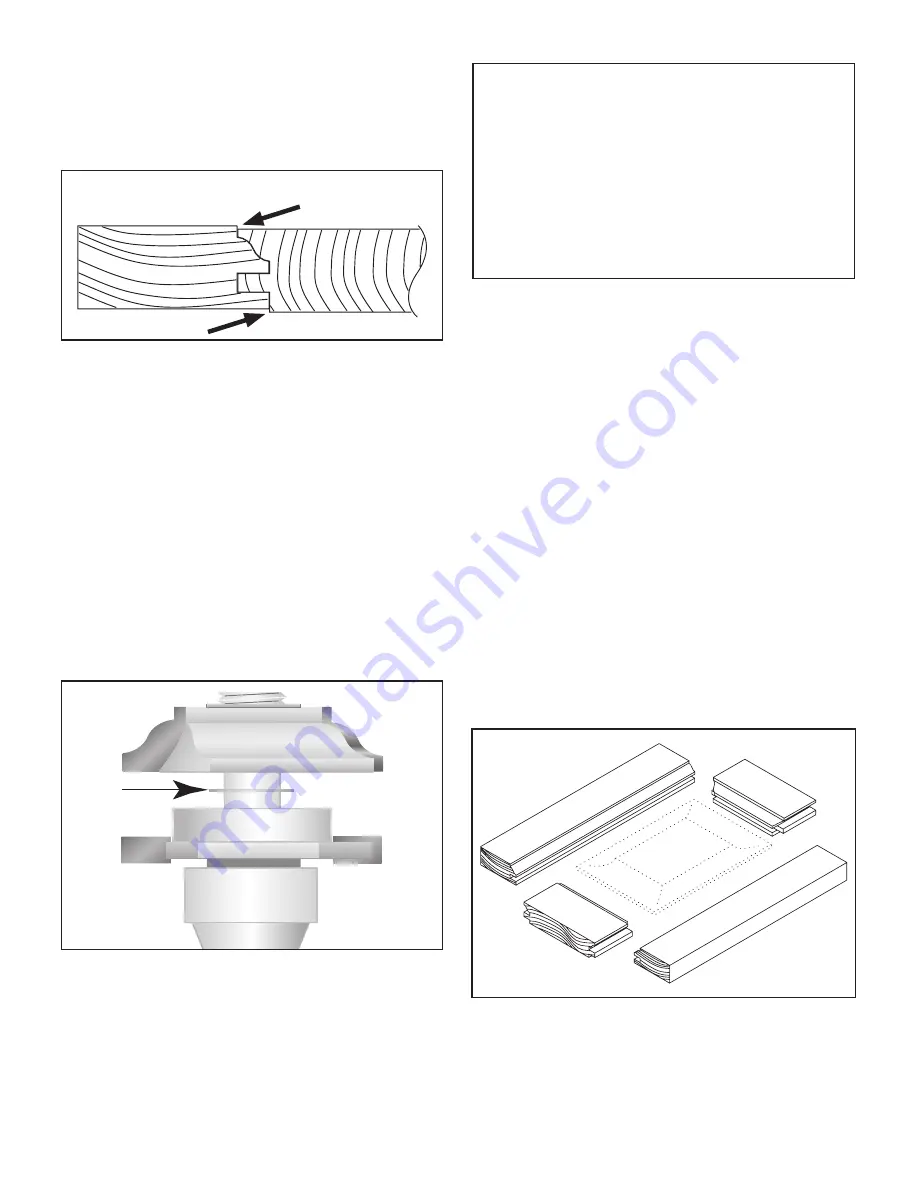
-3-
Adjustments
If the test pieces are not flush (
Figure D
) then check
the following:
Improper Height Adjustment Shown
SHIM
Insert Shim
When Joint Is
Too Tight
Figure F
. Stile and rail assembly.
—If the bottom edge lines up, but the top does
not, make sure the thickness of the stile mate-
rial is the same as the rail material.
—If both the top and bottom edges do not line
up as shown in
Figure D
, adjust the height
of the shaper spindle, or fine tune the cutter
height by placing the included metal shims
between the bushing and the profile cutter.
—If the panel wont slide into the groove in the
stile and rails, place a metal shim between
the guide bearing and the profile cutter as
shown in
Figure E
.
We stress the importance of working with good qual-
ity material and insuring that all pieces are machined
the same and that all ends and edges are cut square.
Follow all recommended safety procedures and
always test your setup using sample pieces.
If this is your first time performing panel door con-
struction, start simple by making a square door.
Doors having more intricate designs, such as arched,
tombstone or curved panels, should only be done
when you are confident of your ability. If your proj-
ect requires curved pieces then freehand shaping
will be necessary. Remove the fence(s) and always
incorporate the use of a starting pin or block to sup-
port the workpiece as it is initially fed into the cutter.
Always use some type of jig or hold-down device to
make the operation safer and to avoid having your
hand in close proximity to the spinning cutter.
Figure F
is a sample of how all the stile and rail
pieces should fit together.
Figure D
. Improperly fitting stile and rail.
Figure E
. Adjustment to fit panel.
NOTICE
If you have never used this type of machine
or equipment before, WE STRONGLY RECOM-
MEND that you read books, trade magazines,
or get formal training before beginning any
projects. Regardless of the content in this
instruction sheet, Grizzly Industrial will not
be held liable for accidents caused by lack of
training.





















